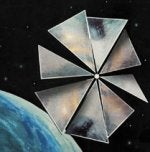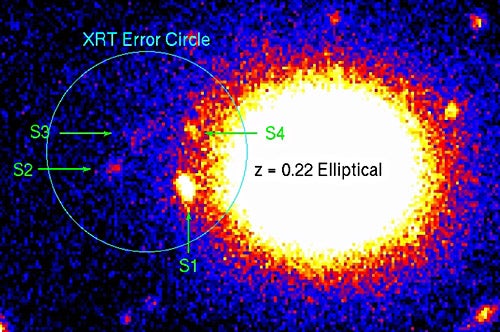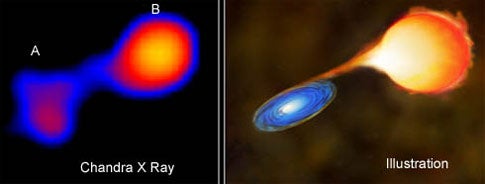Extracting oxygen from “lunar” soil
NASA and the Florida Space Research Institute (FSRI) have announced a new contest challenging teams to extract breathable oxygen from simulated lunar soil. The first team to accomplish this task by June 1, 2008, will receive a $250,000 prize.
The Moon Regolith Oxygen (MoonROx) competition is part of Centennial Challenges, a NASA program that encourages innovative designs to support the space agency’s Vision for Space Exploration and ongoing space missions.
For the MoonROx challenge, participants must develop machinery that can extract at least 11 ounces (five kilograms) of breathable oxygen from JSC-1, a volcanic ash, during an 8-hour period. The results will facilitate lengthy human missions to the Moon — and possibly other worlds.
“The use of resources on other worlds is a key element of the Vision for Space Exploration,” explains Craig Steidle, NASA’s Associate Administrator for the Exploration Systems Mission Directorate. “This challenge will reach out to inventors who can help us achieve the vision sooner.” — Jeremy McGovern
Cosmos 1, the world’s first solar-sail spacecraft, is on its way to its launch site in Severomorsk, Russia. The launch window for this innovative project opens June 21, 2005.
The Planetary Society and its partners, the Lavochkin Association, Space Research Institute in Russia, and Cosmos Studios, plan to send Cosmos 1 into space atop a converted intercontinental ballistic missile from a submerged Russian submarine beneath the Barents Sea. They hope the spacecraft will deploy in Earth orbit and become the first controlled solar-sail flight.
While NASA and other space agencies have developed solar sails, none has tested projects in space. Cosmos 1 was created by a non-profit organization and financed by a private company.
The design holds that solar sails would propel a vehicle in space much as wind sails propel a boat. Solar sails, as the name suggests, would be driven by solar energy. This would reduce the need for fuel and thus decrease the spacecraft weight.
— Jeremy McGovern
Not just gamma rays in bursts
Astronomers using a robotic telescope in Arizona observed infrared light simultaneously with a gamma-ray burst (GRB). This is the first time astronomers have seen infrared energy associated with the initial burst.
Gamma-ray bursts were thought to have gamma- and X-ray emissions during the burst, as a result of internal shocking. After the initial burst, the high-energy material collides with the surrounding gas and dust, which glows in the lower energies — radio waves and infrared. This “afterglow” was the only way infrared radiation had been detected with GRBs. The new observations show that the initial burst — or at least this particular one, GRB 041219a — also emits infrared radiation.
“This burst filled in a piece of the puzzle we didn’t even know was missing,” says Cullen Blake of the Harvard-Smithsonian Center for Astrophysics and lead author of the group’s study, which appears in the May 12, 2005, issue of Nature.
The astronomers used the Peters Automated InfraRed Imaging TELescope (PAIRITEL) located on Mount Hopkins, Arizona, to observe the December 19, 2004, GRB. — Liz Kruesi
Swift pinpoints short GRB
A gamma-ray burst (GRB) that erupted May 5, 2005, lasted just 50 milliseconds, but it may help astronomers solve a long-standing problem. It was the first time a short-duration GRB has been located.
GRBs that last less than 2 seconds have long frustrated astronomers as their brevity yields few observational clues. This burst occurred near an old elliptical galaxy 2.7 billion light-years away. Astronomers have located four candidate sources and are hoping to see which (if any) was the culprit. — Robert Burnham
Firsts for Chandra
Astronomers using the orbiting Chandra X-ray Observatory have imaged, for the first time, a pair of interacting stars — Mira A, an asymptotic giant branch (AGB) star, and Mira B, a white dwarf.
The astronomers also observed a bridge of material between the two stars. The bridge was likely created by a combination of two processes: The gas and dust that exploded off Mira A during its X-ray burst is flowing into an accretion disk surrounding Mira B; and Mira B is gravitationally pulling matter from the AGB Mira A.
The cause of the X-ray burst is still unknown and will take further studies to determine.
The Hubble Space Telescope (HST) previously observed Mira A and Mira B in visible and UV spectra. The angular separation was determined from HST data to be 0.6″, or about 70 AU (where 1 AU is the distance from the Sun to Earth). — Liz Kruesi
Big slides or small?
Mark Bulmer and Brandy Zimmerman at the University of Maryland’s Landslide Observatory think martian landslides have been overrated. In 1976, the Viking Orbiters returned the first images of martian slides in Ganges Chasma, a miles-deep canyon on the eastern end of the vast Valles Marineris system. From the slide’s large debris aprons and the canyon’s scalloped rims, Viking researchers concluded martian landslides were fast and catastrophic — 10 times larger than terrestrial ones.
In the March 16, 2005, issue of Geophysical Research Letters, they suggest the famous martian landslide was not a catastrophic event, but the result of a gravity-driven process operating during millions of years. The researchers propose that rock terraces can be explained by deep-seated gravitational creep, while the movement of talus lobes is similar to that of slow-moving rock glaciers on Earth. However, they concede their model requires ice to work — and the existence of ice in Valles Marineris has not been proven. — Francis Reddy
Spark of life
Life as we know it requires a few key ingredients. Nitrogen, for example, is a major component in many of life’s chemical building blocks, like proteins and DNA. Atmospheric nitrogen’s strong chemical bonds make it nearly inert, which means living organisms must get the element some other way.
On Earth, lightning can break up nitrogen molecules, which then reassemble in “fixed” forms useful to living organisms. Could lightning in volcanic plumes and thunderstorms billions of years ago fix enough nitrogen on Mars to create conditions favorable for life there?
That was the question Antígona Segura of Pennsylvania State College’s Astrobiological Research Center and Rafael Navarro-González at Mexico’s National University, Autónoma, asked themselves. Their answer, published in the March 10, 2005, issue of Geophysical Research Letters, is a resounding “yes.”
Even if Mars never had thunderstorms, lightning would have been common in eruption plumes when the planet was young and its volcanoes active. The researchers simulated volcanic lightning in a laboratory, deriving a chemical mixture of the plume’s gases (hydrogen, water vapor, methane, and nitrogen) from the carbon-nitrogen ratio of martian meteorites.
Their results indicate nitrogen fixation rates on Mars 3.5 billion years ago were comparable to those expected for early Earth. Segura and Navarro-González also found volcanic lightning may be the only source of hydrogen cyanide on ancient Mars. Other laboratory experiments have shown that ammonia and hydrogen cyanide can form adenine, purine, and other compounds relevant to prebiotic chemistry. — Francis Reddy













